Is all oregano the same? Should you use it fresh or dried? How is Greek oregano different from Italian or Mexican oregano? Here’s everything you need to know about cooking with oregano and some of our favorite recipes where its flavor shines.

While no one herb defines the Mediterranean pantry, oregano is a standout among giants. It’s high in antioxidants, and just a sprinkle of it can enhance a dish with its aromatic, herbaceous flavor.
This native-to-the-Mediterranean herb is a mainstay in Greek, Turkish, and Italian dishes. Its bright and robust flavor is an essential component, whether you’re making a hearty tomato sauce, a tangy Greek salad, a savory pizza, or a meaty roast.
Let’s dive into what makes oregano so special, the different types you’ll come across, and how to bring out its best flavors in your own kitchen.
Table of Contents
- What is Oregano?
- What Does Oregano Taste Like?
- Greek Oregano
- Common, Italian, Syrian, and Mexican Oregano
- Fresh Oregano vs. Dried Oregano
- Cooking with Greek Oregano
- What’s A Good Substitute for Oregano?
- Is Marjoram the Same Thing?
- How to Store Oregano
- Recipes Where Oregano Shines
- Use Greek Oregano in One of These Recipes
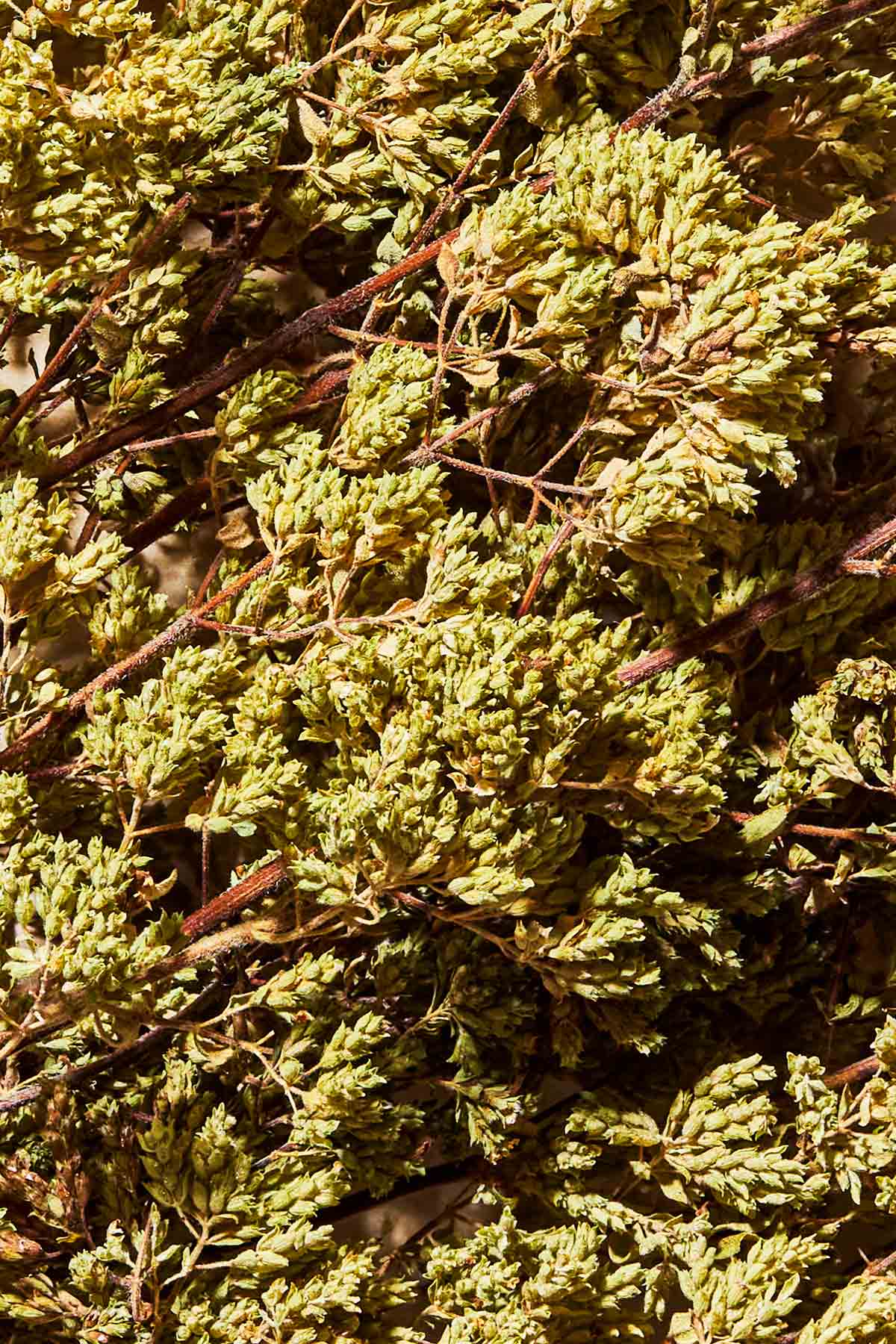
What is Oregano?
Oregano is a fragrant perennial herb with small, oval or spade-shaped green leaves that sometimes have a slightly fuzzy texture and tiny white or pink flowers. It’s a low, shrubby, and hardy plant native to the Mediterranean, Middle East, and North Africa. People collected and cultivated it there for thousands of years.
It’s easy to grow, both outdoors and as a potted plant, and thrives in temperate growing regions worldwide as both a favorite in home gardens and a wild herb in mountainous landscapes.
Rigani, its Greek name, means “joy of the mountains” and reflects the Greek words oros (mountain) and ganos (joy or delight).
Though some species are primarily used as garden ornamentals, its highest calling is as a culinary herb.
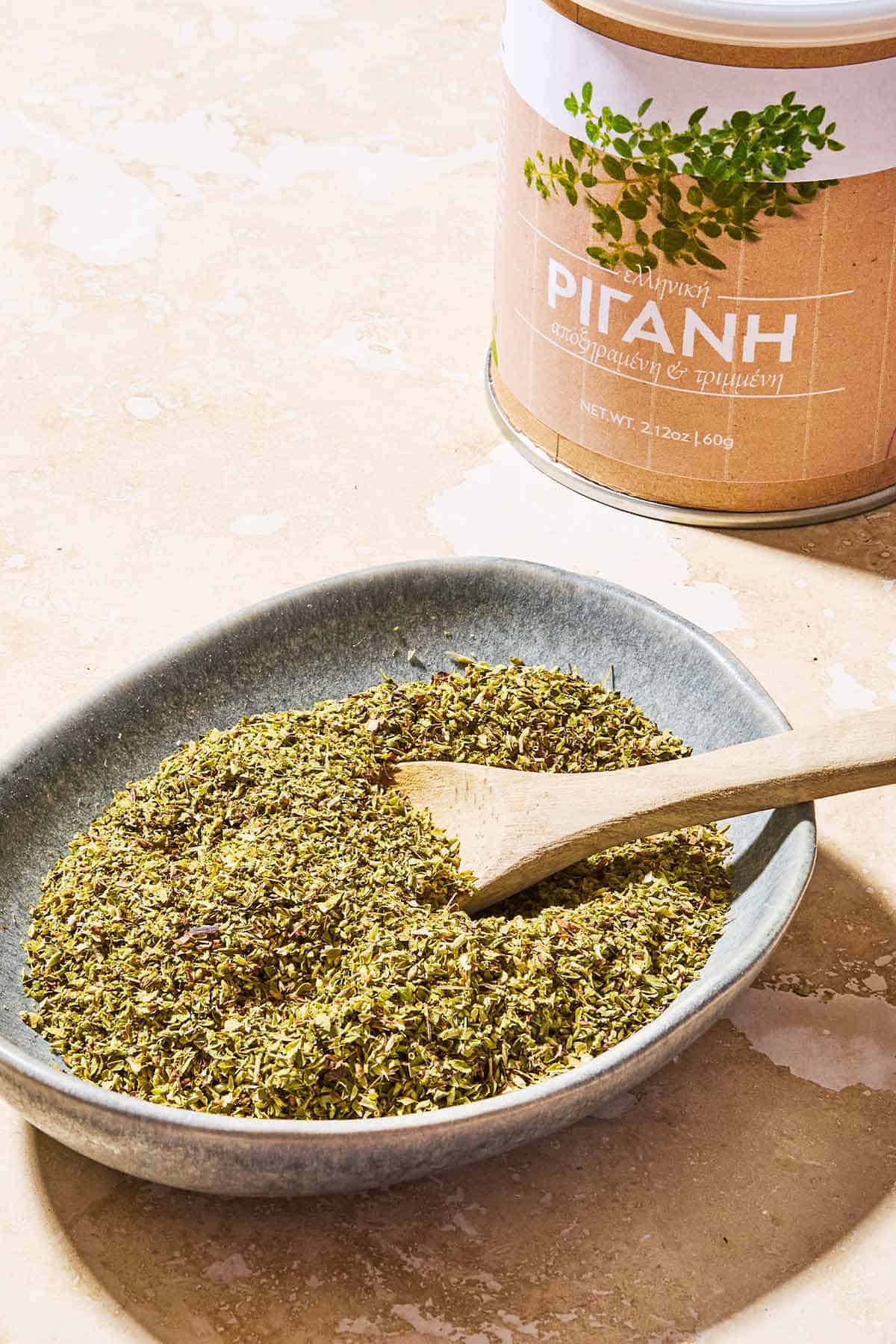
What Does Oregano Taste Like?
The Origanum family includes more than 40 different cultivars. While they share some characteristics, each type of culinary oregano has a unique profile suited to different dishes.
Oregano is beloved for its robust, earthy flavor that combines a bit of pepperiness with a hint of mint or lemon. Some varieties are more pungently savory and others are more delicate, sweet, and citrusy, depending on the type and the growing environment.
Oregano that is wild-harvested or grown in arid, mountainous conditions often has a more pronounced flavor and aroma. It can be used fresh or dried, though dried it often has a more concentrated flavor.
Greek Oregano
The most prized variety in the Mediterranean is Greek oregano, also known as Turkish oregano or Cretan oregano. It has a dark green color and unique flavor profile with a pronounced peppery warmth and subtle hints of lemon and pine.
At the Mediterranean Dish, Greek Oregano is our favorite variety. We import it directly from Greece, where it is harvested in the summer, and naturally dried to protect its essential oils.
We use two kinds: dried bunches and leaf oregano. Dried bunches (stems and all) go into our favorite soup recipes, or we crush and sprinkle it over a salads as a finishing seasoning. You can also use our Greek bunch oregano to make a delightful and soothing herbal tea. Just steep it in hot water for 5 to 10 minutes, strain, and add a touch of Greek honey.
Think of dried leaf oregano as your everyday cooking herb. Sprinkle it over salads, use in soups, marinades, spice blends, or any recipe where oregano is used. Because of its high-quality, this herb has a pronounced flavor, so a little goes a long way.
Greek oregano, with its small, dark leaves and clusters of flavorful white flowers, has a strong, complex aroma. This distinctive herb infuses dishes from the Greek islands and countryside with its signature flavor. Its lemony, peppery taste complements everything from chicken souvlaki and potato salad to fresh salads, dipping oils, and the all-purpose salad dressing that doubles as a marinade Ladolemono.
- TRY IT: Greek Oregano Leaves or the Greek Orango Bunch
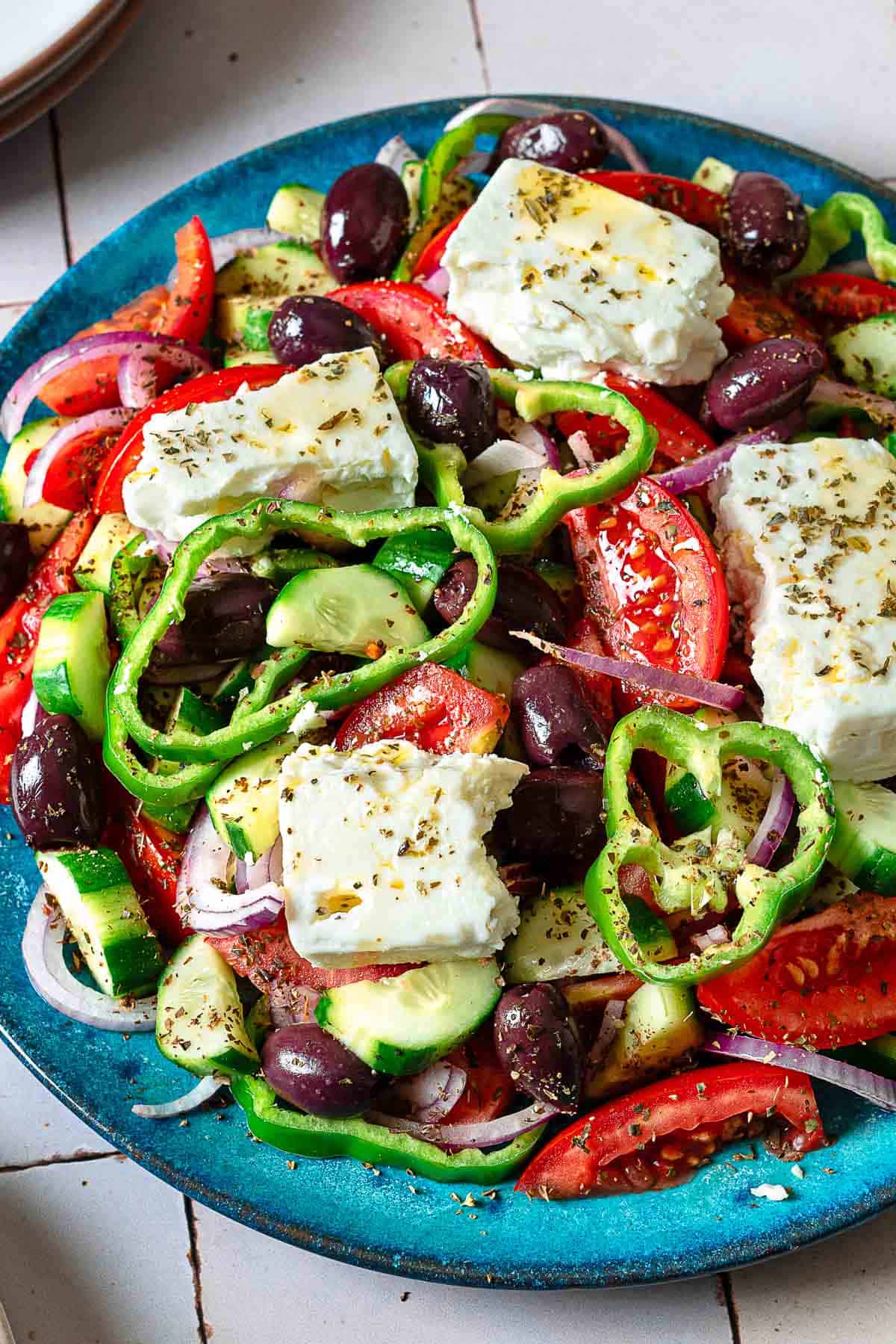
Common, Italian, Syrian, and Mexican Oregano
Common Oregano
Often just labeled “oregano”, this is what you’ll find dried in the supermarket spice aisle. It could be one of several different subspecies. It has a peppery flavor that’s good as an all-purpose seasoning, but it’s not as distinctive as the Greek type.
Italian Oregano
A hybrid of Greek oregano and sweet marjoram, the Italian variety is a bit milder and sweeter, with a delicate floral note and a softer edge. In both Sicily and Calabria, it’s dearly beloved and often used in recipes for tomato sauces and dishes like pizza, pasta, and meatballs.
Syrian Oregano
A type of oregano that forms long, flavorful flower buds, Syrian oregano is often dried and blended with ground sumac, sesame seeds, and other herbs such as thyme, marjoram, or savory to make into za’atar, a Middle Eastern spice mixture.
Mexican Oregano
Contrary to the name, this herb is actually not, botanically speaking, a type of oregano! It’s native to Central America and more closely related to lemon verbena. It has a sharp, citrusy, grassy flavor with a hint of licorice that’s delicious in salsas, chili, cooked beans, and other Southwestern and Central American dishes.
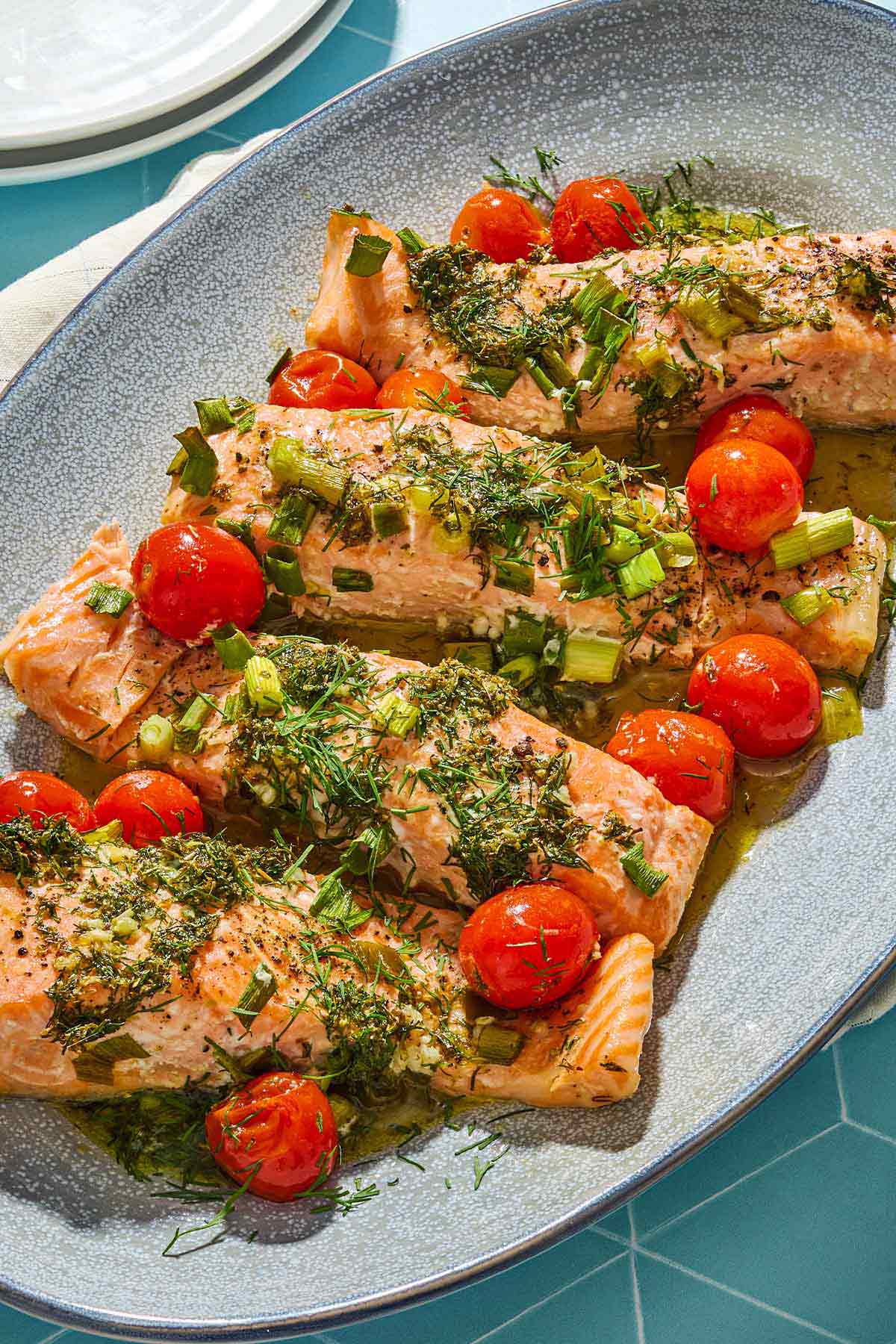
Fresh Oregano vs. Dried Oregano
While most herbs tend to lose some of their flavor once dried, the flavor of dried oregano persists, and in Greece it’s typically used dried.
Dried is often more potent than fresh, so if a recipe calls for dried, remember that you’ll need about three times as much fresh to get the same flavor pay-off. The fresh leaves are wonderful for garnishes or last-minute additions, while dried is best for marinades, sauces, and any dishes that cook for longer periods.
In Greece, bunches are traditionally dried under the sun and crushed just before use to release their aromatic oils. Crushing the leaves between your fingers or in the palm of your hand before adding them to your dish releases more flavor.
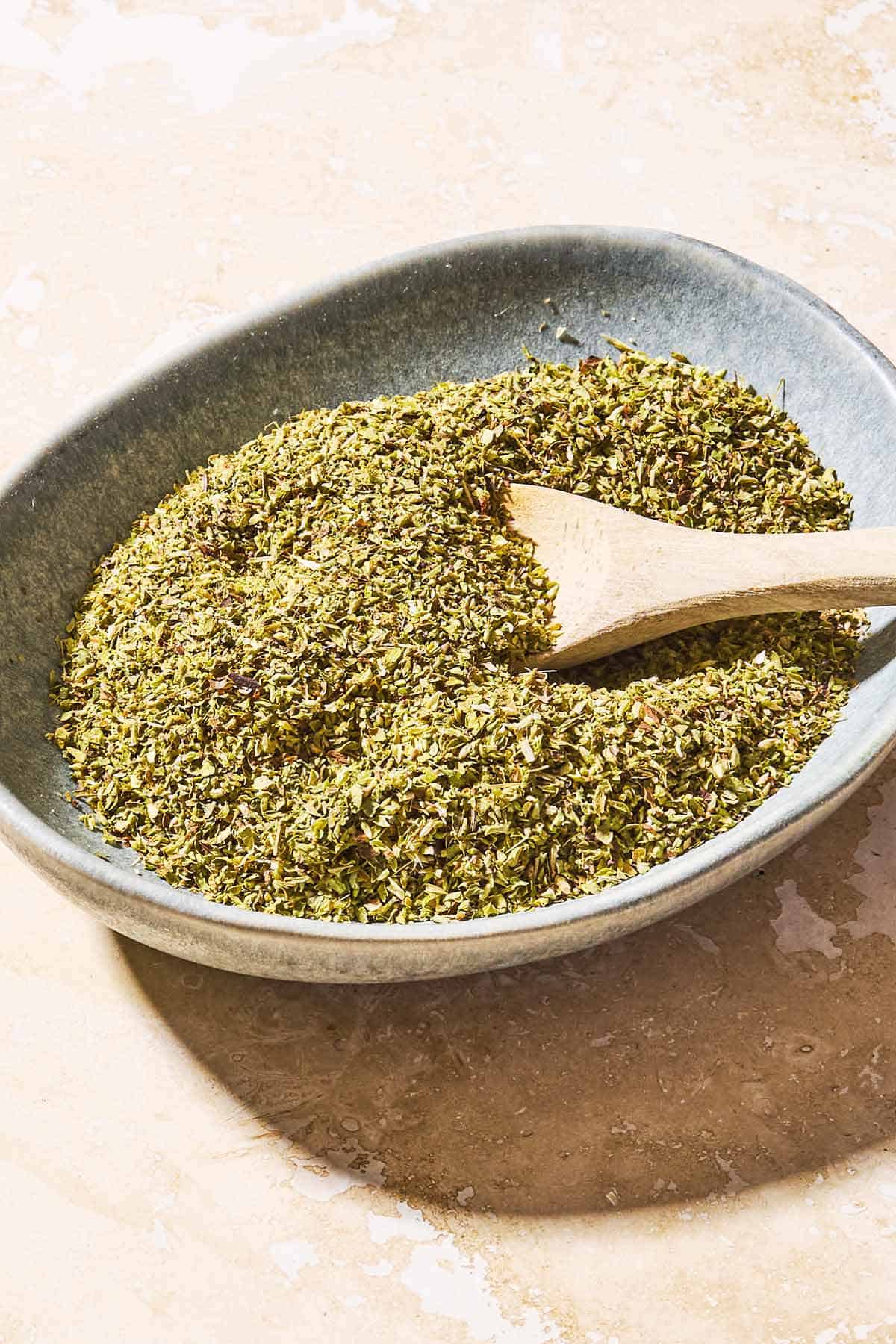
Cooking with Greek Oregano
Oregano adds big flavor and depth to a wide range of dishes! To use fresh oregano, simply strip the leaves from the stem, chop them, and add them to your recipe.
Before cooking, crush dried leaves and blossoms to release their aromatic compounds. Here are some of our favorite ways to use them:
- Marinades: Fresh or dried oregano can add a wonderful earthiness to marinades for grilled chicken, lamb, and even vegetables. Try mixing it with olive oil, lemon, garlic, and salt for an easy Mediterranean marinade that works on just about anything.
- Sauces: Oregano’s bold flavor shines in tomato-based sauces, which is why it’s a must for Italian classics like marinara, tomato sauce, and Bolognese.
- Salads: A sprinkle of dried oregano over Greek salad (Horiatiki) adds a touch of warmth and aroma that brings the salad to life.
- Seasoning: A pinch of oregano is a fantastic way to finish off roasted vegetables, potatoes, or even a simple bowl of olive oil and vinegar for dipping bread.
- Soups: Add oregano to vegetable and bean soups for a rich, herbaceous flavor that compliments hearty ingredients like tomatoes, chickpeas, and lentils.
What’s A Good Substitute for Oregano?
Though it’s difficult to substitute because of its distinctive aroma, you can often use one type in place of another without issue.
Marjoram is a close option. Another good choice would be to use Italian Seasoning, which often contains some oregano in addition to other herbs and sometimes aromatics.

Is Marjoram the Same Thing?
Marjoram, also called sweet marjoram, looks very similar, but they’re not the same plant. They could be considered cousins, botanically speaking, because they’re both members of the genus Origanum, which is a subcategory of the mint family of which lavender and sage are also members.
Marjoram is also a perennial herb with small green leaves, but its flavor is milder and less resinous, noticeably more delicate, sweet, and musky. It’s lovely in dishes with light flavor, like Pasta with Peas, or Fall Rotini Pasta Salad, where the bigger flavor of oregano might take over.
That said, they often work hand in hand — like in Italian Seasoning — to contribute a round herbal flavor to Mediterranean dishes.
How to Store Oregano
Store fresh sprigs wrapped in a towel in a bag or airtight container, checking them every few days.
Keep dried oregano in a closed container out of direct sunlight.

Recipes Where Oregano Shines
Whether you bought a generous container of dried or you’ve got a bumper crop from your garden and need some inspiration to help use it up, here are a few of our favorite recipes!
Marinades:
- Greek Chicken Marinade
- Roast Spatchcock Chicken with Citrus & Honey
- Easy Greek Salmon
- Baked Greek Meatballs and Potatoes with Garlic and Lemon
Salads:
- Ladolemono: Greek Salad Dressing
- Lemon Vinaigrette
- Greek Salad (Traditional Horiatiki Recipe)
- Maroulosalata (Greek Lettuce Salad)
Seasoning:
Soups and Stews:
Use Greek Oregano in One of These Recipes
Browse all Mediterranean recipes.
Visit Our Shop.
Try Our Greek Oregano!
This dried herb straight from Greece is lemony, fragrant, and perfect for everyday use.
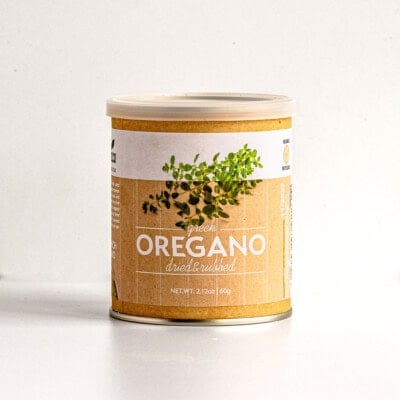


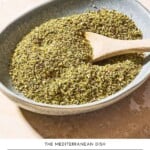




Thank you for these descriptions. It will help me shop for the flavours I desire from oregano. I notice that you only ship to the US, so that leaves me out, but I want to learn Mediterranean cuisine from this website, I am so impressed with the flavours in the recipe I tried and so were my friends. They wanted the recipe.
Thank you so much for your kind note, Nushka!
By Latin name, which species of oregano are you calling “Greek”? Both Origanum onites and Origanum vulgare hirtum are referred to as “Greek oregano”. I’d like to be more clear about this.
Hi Rowen! In the entry about Greek Oregano I was referring specifically Origanum onites and the entry for common oregano is Origanum vulgare hirtum, which is a more general category that comprises many different subspecies.